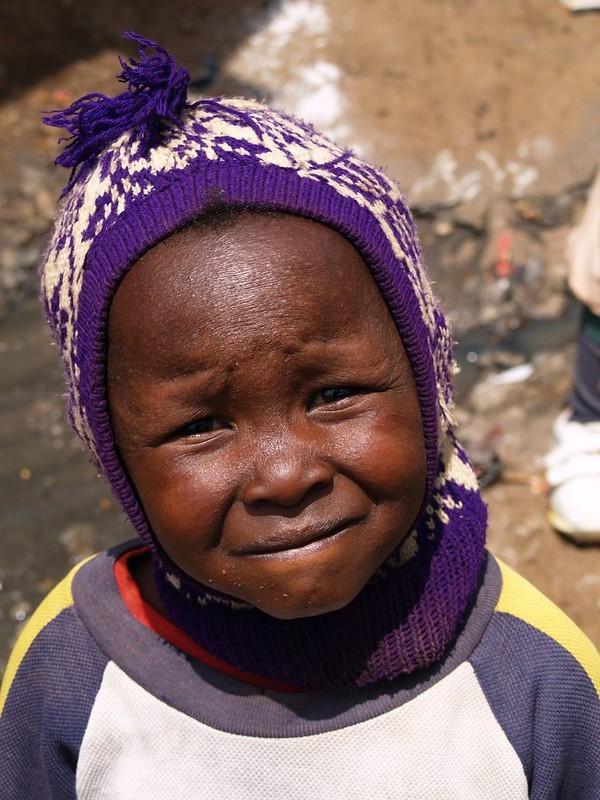A pair of new studies describe COVID-19–related parental loss and occupational death rates, with a global analysis finding that children were more likely to be orphaned if they lived in the poorest countries with high rates of noncommunicable diseases, and the other showing that essential workers in California had higher rates of coronavirus deaths and excess deaths than those with less workplace exposure.
Poor countries, high noninfectious disease rates
In a study published yesterday in PLOS Global Public Health, a team led by Australian National University (ANU) researchers used an online calculator to estimate the total number of orphans per COVID-19 death for 139 countries from the start of the pandemic to Sep 28, 2021.
The risk of COVID-19 death leading to orphaned children varied widely around the world, with the highest risk in countries with below-median per-capita gross domestic product (GDP) (1.56 orphans per death), relative to countries with higher GDPs (0.09). African countries were particularly hard hit. For example, in Angola, two children were orphaned per COVID-19 death, compared with one orphan for every eight COVID deaths in Australia (0.13 orphans per COVID-19 death).
Other factors influencing risk included a high prevalence of poverty and a high percentage of reproductive-aged people (15 to 49 years old) with noninfectious diseases such as diabetes and heart disease. Second-dose COVID-19 vaccination was tied to a lower risk of orphanhood.
"The risk of children being orphaned per COVID-19 death, alongside fertility rate, is due to there being a greater share of COVID-19 deaths among younger persons," the researchers wrote. "Our findings underscore the need for uniform vaccination coverage across the globe, which will minimize the number of deaths among all demographics including parents, and therefore minimize the number of children becoming orphaned."
In an ANU press release, lead author and PhD candidate Callum Lowe said that some people think of COVID-19 as an older person's disease, but many children have been affected by the loss of their caregivers.
"These are children that may have lost one or, sometimes tragically, both parents," he said. "They were grieving in lockdowns, away from other family and friends and without the routine of normal school life. That has an impact on their mental health, their education, and their wellbeing over the long term."
COVID-19 will have a huge effect on the next generation, Lowe said. "The research highlights the need for government resources and policy settings that ensure children affected by the death of one or both parents are properly supported, particularly in vulnerable populations like First Nations and rural communities," he said.
Highest death rate in agricultural workers
In the United States, University of California at San Francisco researchers led an analysis of COVID-19 deaths and excess deaths among state residents aged 18 to 65 years recorded by the California Department of Public Health from Mar 1, 2020, to Nov 30, 2021.
They also modeled estimated weekly total, per-capita, and relative excess deaths from natural causes from Mar 1, 2020, to Nov 30, 2021, and stratified occupational risk by COVID-19 vaccine uptake by Aug 1, 2021. The findings were published today in The Lancet Public Health.
A total of 24,799 adult Californians died of COVID-19 during the study period, and there were an estimated 28,751 excess deaths. Essential workers (those who could not work from home) were associated with higher rates of COVID-19 and excess deaths, ranging from 131.8 per 100,000 people in the agriculture industry to 107.1/100,000 in those working in transportation or logistics, 103.3/100,000 manufacturing workers, 101.1/100,000 facility workers, and 87.8/100,000 emergency employees.
Death-rate disparities were wider during COVID-19 surges, including the Delta wave from Nov 29, 2020, to Feb 27, 2021. During the Jun 27 to Nov 27, 2021, surge, emergency workers had the highest COVID-19 death rate, at 113.7 per 100,000. Essential workers in counties with the lowest vaccine uptake died at the highest rates, a disparity that became more apparent during Delta.
"This high death toll has continued during periods of vaccine availability and the delta surge," the authors wrote. "In an ongoing pandemic without widespread vaccine coverage and with anticipated threats of new variants, the USA must actively adopt policies to more adequately protect workers in essential sectors."
The researchers called for increased vaccine uptake among essential workers, nonpunitive sick-leave policies, and workplace protections such as masks and adequate ventilation.
High burden on disadvantaged populations
In an editorial, journal editors said that the pandemic exposed existing labor market fragilities and disparities and highlighted the importance of the workplace as an overlooked target for public health.
"Worker experiences varied, with a disproportionate burden being placed on already-disadvantaged groups, overrepresented in jobs that required close physical proximity, carrying a higher risk of infection and job insecurity," they wrote.
The editors pointed out that underrecognized workers such as family caregivers—most of them women—shoulder a disproportionate burden of unpaid work. Women also are, on average, paid far less than men and are more often subject to workplace harassment and violence. The burdens of young caregivers also tend to be overlooked, they added.
"Work-related stresses and deaths can be prevented," they wrote. "Governments, employers, workers, and policy makers should participate in a meaningful dialogue to scale up efforts to prevent those unacceptable losses."
The editors urged rethinking the way workplaces are viewed by paying more attention to worker health and well-being, the provision of care policies and services, maternity leave, and adequate benefits. "All workers must enjoy the highest level of health protection and support—this is a right that should not be negotiable," they concluded.





















